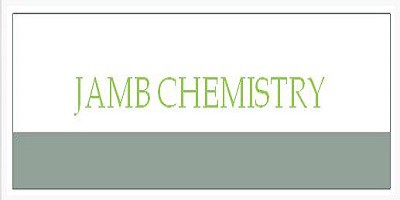Expected Topics And Approach To JAMB Chemistry Question

JAMB Chemistry questions are easy to pass if one can pay close attention to some important topics in chemistry. There are topics in the UTME chemistry syllabus that are repeatedly seen in JAMB questions.
On this page, I will list those topics that every candidate writing JAMB UTME chemistry should pay close attention to.
- Separating techniques
- How to determine empirical formula
- Balancing of equation
- Acid, Base, and Salt (Physical and Chemical properties, Neutralization rxn)
- PH Scale
- Isotopes
- Electronic configuration
- Gas Law
- Redox reaction
- Rate of chemical reaction (Le Chatelier’s principle)
- Carbon and its compound
- Hydrogen and its compound
- Nitrogen and its compound
- Sulphur and its compound
- Allotropes
- Aromatic and Aliphatic Hydrocarbon (Alkane, Alkene, Akyne, Benzene)
- Isomerism
- Alkanol
- Alkanoic
- Esterification
- Hardness of water
- Saponification
The above topics are grouped under organic, physical, and industrial chemistry.
Download Chemistry past questions and answers: Click Here
Many students believe that chemistry is volatile and that is the reason you need to adequately prepare to be able to score above 70 in it.
You must know the chemical properties, physical properties, and laboratory preparation of no 11 – 14. Also naming of hydrocarbon and their differences and balancing of redox reaction are equally important. I have discovered that candidates who pay close attention to these areas in chemistry always perform well in the exam.
Read: Topics and Past Questions in JAMB Physics
Some Questions and Answers
Kindly note that the questions below are from past questions and the intention is to familiarize you with chemistry questions in JAMB.
(1) An organic compound contains 60% carbon, 13.3% hydrogen and 26.7% oxygen. Calculate the empirical formula.
(A) C6H13O2
(B) C4H9O
(C) C5H12O
(D) C3H8O
[C = 12, H = 1, O = 16]
Answer – D
(2) The reaction between ammonia and ethyl ethanoate produces
(A) ethanol and propanamide
(B) ethanol and ethanamide
(C) propanol and ethanamide
(D) propanol and propanamide.
Answer – B
(3) 2-methylbutan-2-ol is an example of a
(A) secondary alkanol
(B) tertiary alkanol
(C) dihydric alkanol
(D) primary alkanol
Answer – B
(4) Chlorophyll obtained from green leaves of plant can be composed of more than one coloured component by the technique of
(A) crystallization
(B) hydrolysis
(C) chromatography
(D) sublimation
Answer – C
(5) The colour of the fountain water is
A. blue B. orange C. red D. yellow.
Answer – C
(6) Permanent hardness of water can be removed by
(A) filtration
(B) adding slaked lime
(C) adding caustic soda
(D) boiling.
Answer – B
(7) A solution which on treatment with hydrochloric acid produces a colourless, odourless gas which turns lime water milky is most likely to be a
(A) trioxocarbonate(IV)
(B) trioxonitrate(V)
(C) hydroxide
(D) chloride
Answer – A
(8) If chlorine is bubbled into water and the resulting yellowish-green solution is exposed to bright sunlight for a while, the solution will decompose giving out
(A) oxygen, thereby producing hypochlorous
(B) chlorine and oxygen
(C) oxygen and leaving behind aqueous hydrochloric acid
(D) oxygen, hydrogen and chlorine
Answer – C
(9) H3PO4(aq)+ H2O(l) → H2PO4–(aq) + H3O+(aq)
∆H = –13kJ at 298K
In the reaction above, an increase in temperature would
(A) have no effect on the reaction
(B) slow down the reverse reaction
(C) favour the forward reaction
(D)favour the reverse reaction
Answer – D
(10) Sulphur (IV) oxide bleaches by
(A) hydration (B) reduction (C) absorption (D) oxidation
Answer – B
(11) Which of the following gases can be collected by the method of downward delivery?
(A) Oxygen (B) Hydrogen (C) Chlorine (D) Ammonia.
Answer – C
(12) Milikan’s contribution to the development of atomic theory is the
determination of
(A) charge on electron (B) positive rays (C) charge to mass ratio (D) cathode rays
Answer – A
(13) What current in amperes will deposit 2.7g of aluminium in 2 hours? (A) 32 (B) 8 (C) 4 (D) 16
Answer – C
(14) Ethanoic acid is
(A) tribasic (B) unionizeable (C) monobasic (D) dibasic
Answer – C
Read: JAMB chemistry syllabus
